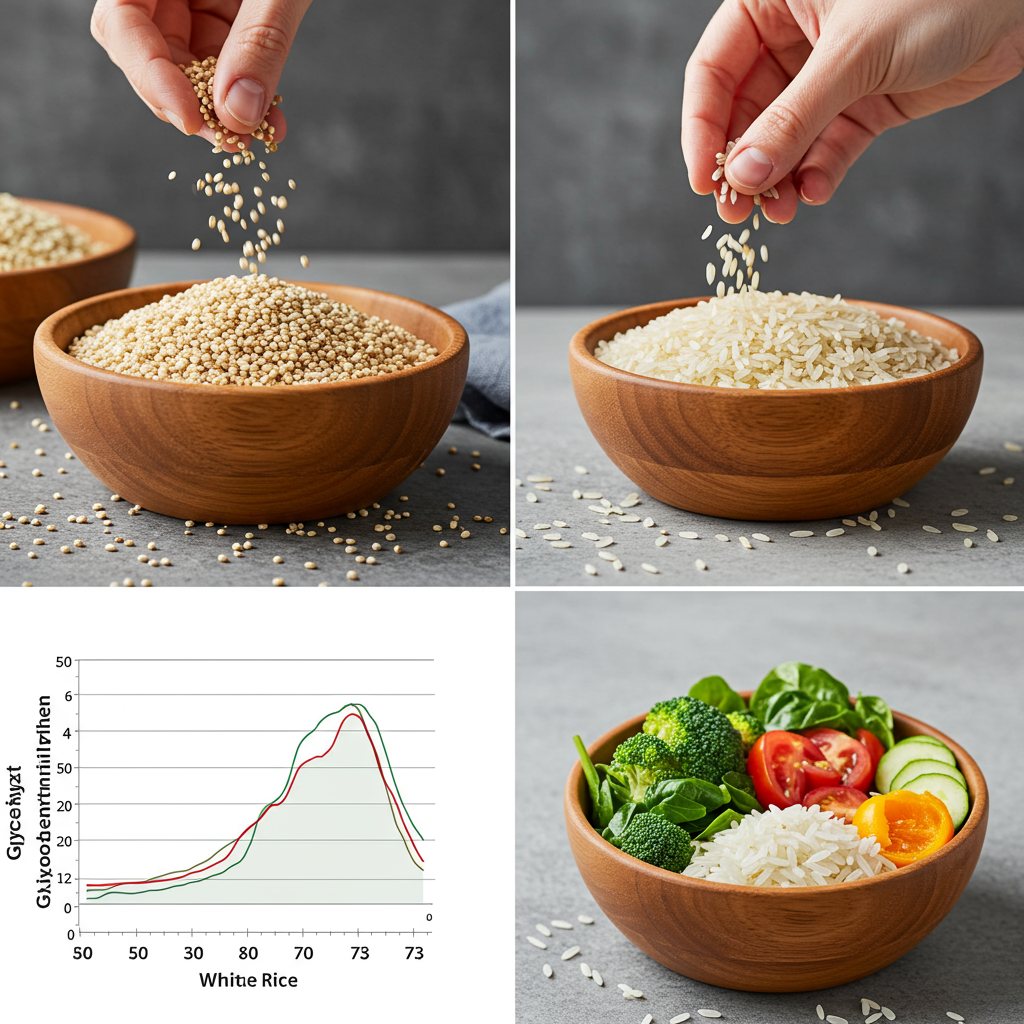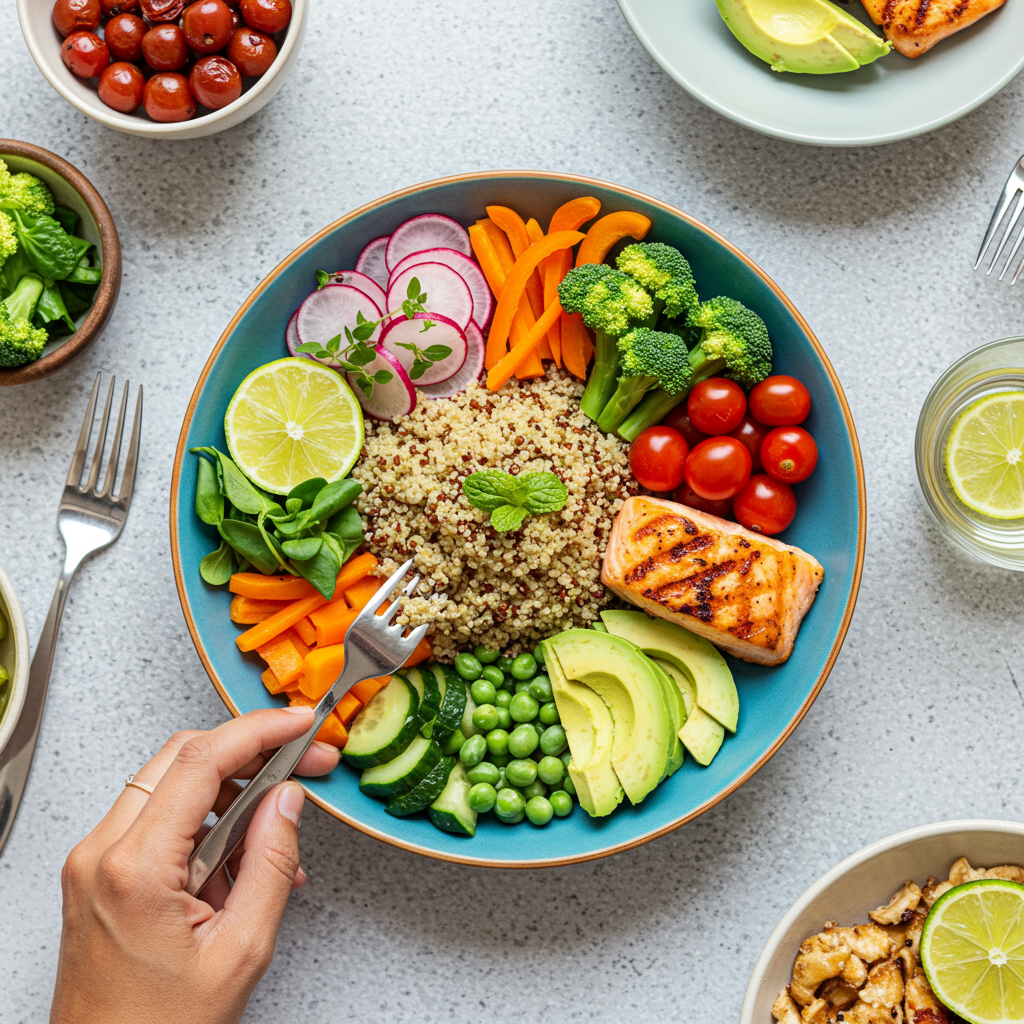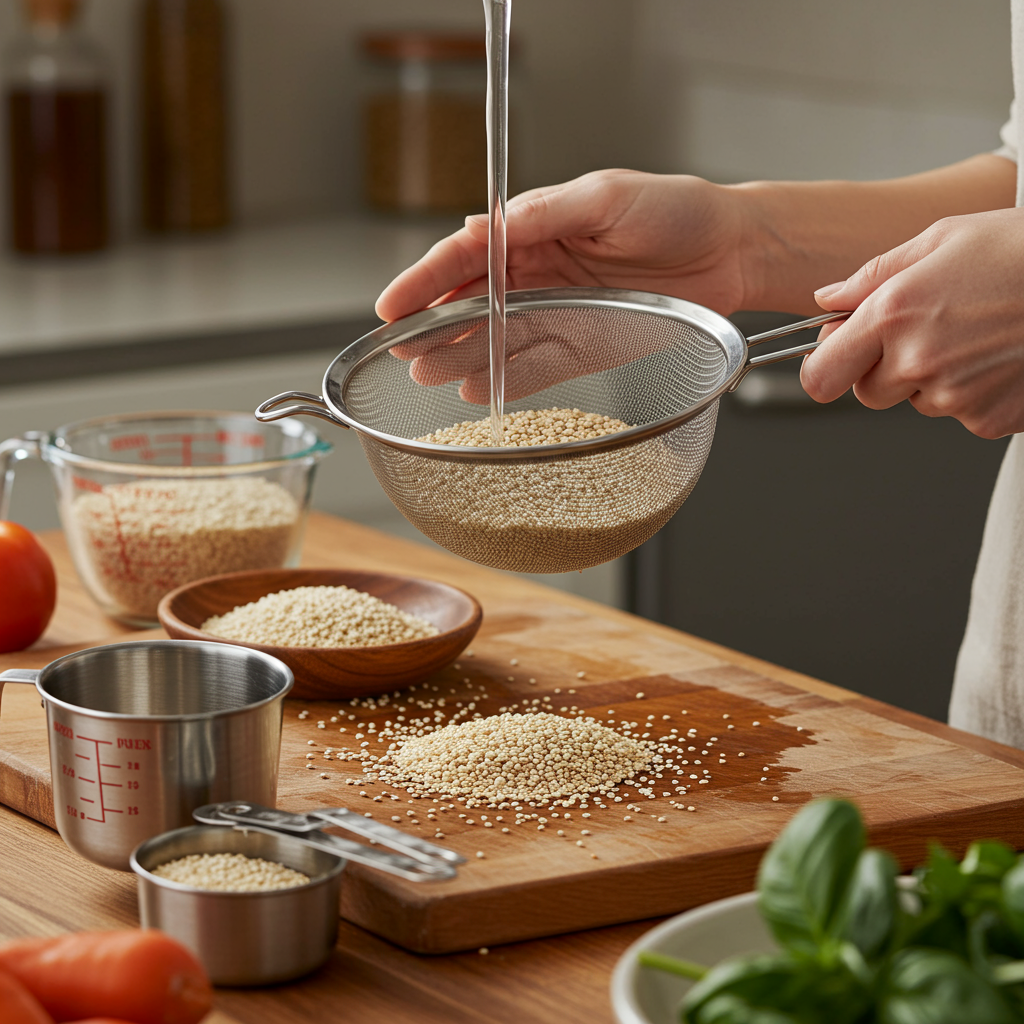Beyond the Bowl: Why Quinoa Trumps Rice for Blood Sugar Management
Blood sugar management is at the heart of preventing and managing diabetes. As a functional medicine practitioner, I've seen countless patients transform their health by making strategic food swaps that honor their body's biochemistry. One question I'm frequently asked is whether rice or quinoa is the better choice for maintaining stable blood sugar levels. Let's dive into the science behind these popular grains and discover why one clearly outperforms the other when it comes to glycemic control.
The Glycemic Impact: Not All Carbs Are Created Equal
When we consume carbohydrates, they're broken down into glucose, which enters our bloodstream and signals the pancreas to release insulin. However, different carbohydrates affect blood sugar at different rates and intensities – this is where the glycemic index (GI) and glycemic load (GL) become crucial metrics.
White rice has a relatively high glycemic index of approximately 73, while brown rice comes in lower at around 68. Both can cause notable spikes in blood sugar levels, especially when consumed alone. These spikes trigger insulin surges that, over time, can lead to insulin resistance – the core dysfunction behind type 2 diabetes.
Quinoa, by contrast, has a significantly lower glycemic index of about 53. This means it causes a gentler, more gradual rise in blood glucose levels, placing less stress on your insulin-producing beta cells. For someone concerned with blood sugar management, this difference is substantial – it's the difference between a rapid flood and a controlled release of glucose into your system.

Nutritional Density: The Functional Medicine Perspective
From a functional medicine standpoint, food is information – it sends biochemical messages throughout your body. Quinoa delivers superior messaging compared to rice in several key ways:
Protein Content: Quinoa contains approximately 8 grams of protein per cup (cooked), nearly double the protein in brown rice (about 5 grams) and triple that of white rice (about 4 grams). This higher protein content helps slow carbohydrate absorption, further reducing blood sugar spikes.
Fiber Profile: With about 5 grams of fiber per cup, quinoa outperforms both brown rice (3.5 grams) and white rice (less than 1 gram). Fiber creates a gel-like substance in the digestive tract that slows down carbohydrate digestion and glucose absorption.
Micronutrient Advantage: Quinoa provides substantial amounts of magnesium, which improves insulin sensitivity and glucose utilization. It's also rich in antioxidants, particularly quercetin and kaempferol, which have been shown to have anti-inflammatory and blood sugar-regulating properties.
Complete Protein: Unlike rice, quinoa contains all nine essential amino acids, making it a complete protein source. This matters for blood sugar regulation because balanced amino acid intake supports proper metabolic function and muscle maintenance – critical factors in glucose metabolism.


Practical Implementation: Making the Switch
Transitioning from rice to quinoa doesn't have to be challenging. Here are some practical tips to incorporate this blood sugar-friendly pseudo-grain into your diet:
-
Start with proper preparation: Rinse quinoa thoroughly before cooking to remove its natural bitter coating (saponins). Cook it in a 1:2 ratio (1 cup quinoa to 2 cups liquid) for about 15 minutes until the spiral-like germ separates from the seed.
-
Make blood sugar-balanced meals: Pair quinoa with healthy fats and proteins to further reduce its glycemic impact. Try it with wild-caught salmon, avocado, and steamed vegetables for a complete meal that won't spike blood sugar.
-
Batch cook for convenience: Prepare a large batch of quinoa at the beginning of the week and refrigerate it for easy meal additions. This prevents falling back on quick, processed carbs when time is limited.
-
Explore variety: Quinoa comes in different colors (white, red, black) with subtle flavor differences. Experiment with them in different dishes – from breakfast porridge to dinner salads – to keep meals interesting.
-
Transition gradually: If you're accustomed to rice, try a 50/50 mix of quinoa and brown rice initially, gradually increasing the quinoa proportion as your palate adjusts.
When counseling patients with diabetes or insulin resistance, I typically recommend limiting rice consumption to rare occasions and in small portions, while encouraging quinoa as a regular staple in their nutrition plan. The blood sugar difference is measurable and meaningful.
The evidence is clear: quinoa represents a superior carbohydrate choice for anyone concerned with blood sugar management. Its lower glycemic impact, higher protein and fiber content, and richer micronutrient profile make it a functional food that supports metabolic health rather than undermining it.
As I often tell my patients: food is either medicine or poison. When it comes to the rice versus quinoa debate, quinoa is decidedly medicine for your metabolism.
References:
-
Jenkins DJ, Kendall CW, Augustin LS, et al. Glycemic index: overview of implications in health and disease. Am J Clin Nutr. 2002;76(1):266S-273S. doi:10.1093/ajcn/76.1.266S
-
Tang G, Wang D, Long J, Yang F, Si L. Meta-Analysis of the Association Between Whole Grain Intake and Coronary Heart Disease Risk. Am J Cardiol. 2015;115(5):625-629. doi:10.1016/j.amjcard.2014.12.015






